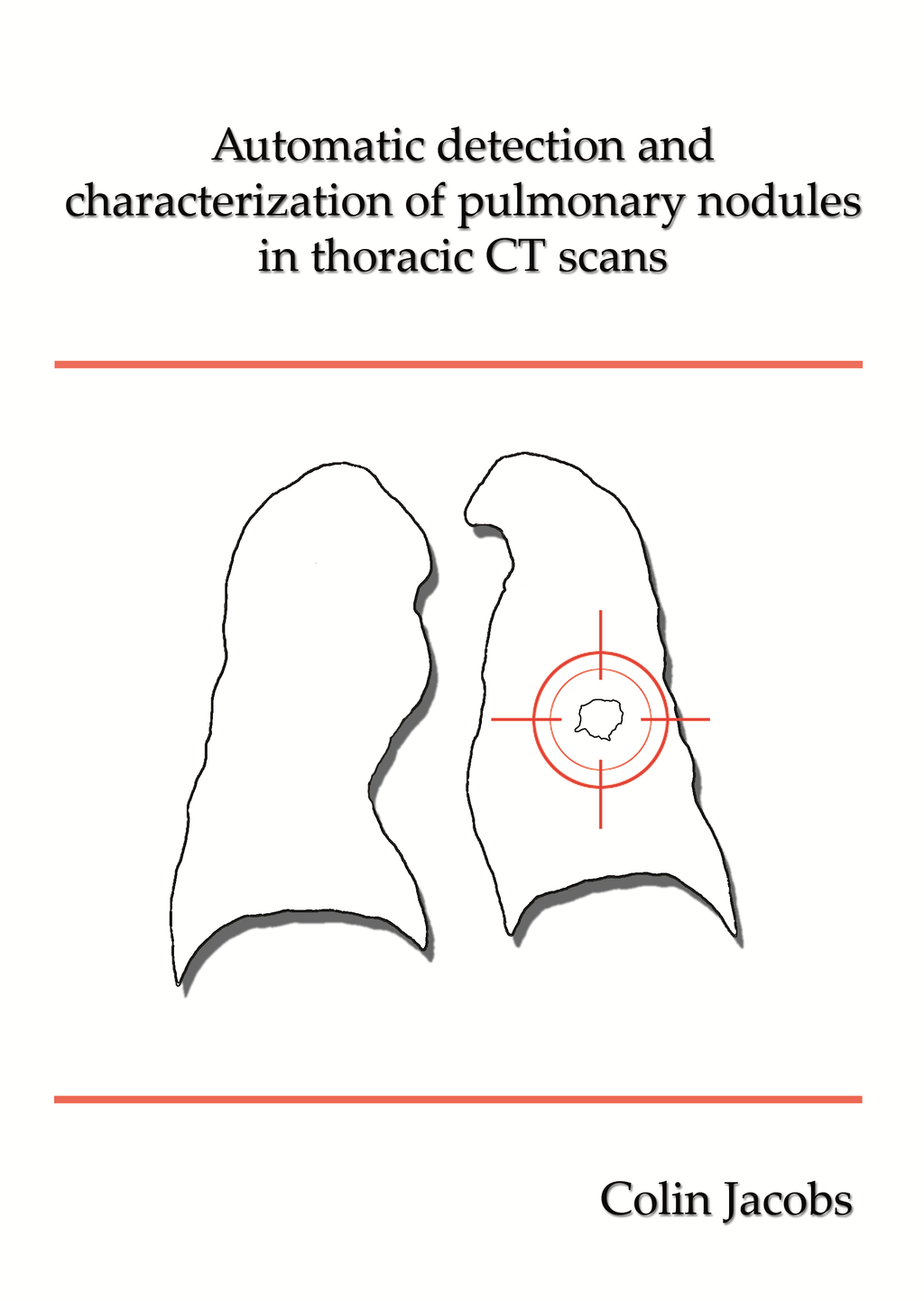Automatic detection and characterization of pulmonary nodules in thoracic CT images
C. Jacobs
- Promotor: B. van Ginneken and C. Schaefer-Prokop
- Copromotor: E. van Rikxoort
- Graduation year: 2015
- Radboud University, Nijmegen
Abstract
Automatic analysis of thoracic CT scans has the potential to improve detection rate of pulmonary nodules, reduce interobserver variability and speed up evaluation of screening CT scans. This however strongly depends on the performance of CAD systems. If the performance is good enough, it will probably positively influence the cost-effectiveness of lung cancer CT screening. This thesis presents novel algorithms to find abnormalities in thoracic CT images, which may be of benefit in the interpretation of chest CTs in lung cancer screening or clinical practice in general. The main focus of the thesis is automatic detection of pulmonary nodules in thoracic CT. The outline of this thesis is as follows. Chapter 2 describes a novel computer-aided detection system for subsolid pulmonary nodules. Detection of subsolid nodules has increased due to the use of thin-slice CT and the implementation of lung cancer screening trials and as a consequence, their prevalence and malignancy rate are better understood. Subsolid nodules are less common, but show a higher malignancy rate than solid nodules. We present a novel subsolid CAD system which is trained and validated with data from two sites from the NELSON lung cancer screening trial. In Chapter 3, a nodule detection system is developed for the detection of micronodules in subjects at high-risk for developing silicosis. Chronic silicosis is radiologically characterized by widespread, well-defined solid pulmonary micronodules, measuring 3 mm or less. Early detection is crucial to stop progression but detection and quantification of these small nodules is tedious for human observers. We present an automatic method which finds micronodules and quantifies the micronodule load. Chapter 4 describes a study in which we perform a comparative study of state-of-the-art nodule CAD systems on the largest publicly available reference data set, containing more than 1,000 CT scans. We perform an extensive analysis of the performance of three state-of-the-art CAD systems; two commercial and one academic CAD system. In Chapter 5, an automatic classification system for pulmonary nodules detected on CT is presented. Every nodule is classified as either solid, part-solid, or non-solid. This classification is crucial for management of pulmonary nodules. To put the performance of CAD into context, we also assess the interobserver variability among radiologists in this chapter. In Chapter 6, a system for automatic detection of interval change on consecutive CT scans is proposed. Interval change is of major importance when subjects are screened repeatedly. We propose an automatic detection system based on subtraction images which are acquired by employing an elastic registration method between consecutive CT images. Chapter 7 discusses how the presented algorithms could be efficiently integrated into software that could be used in clinical routine or in CT lung screening programs.
